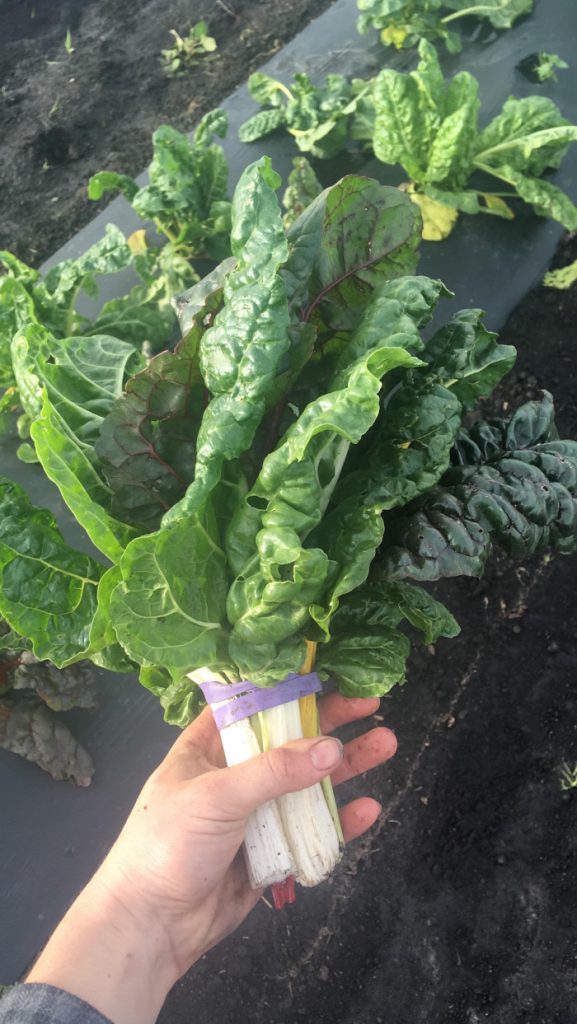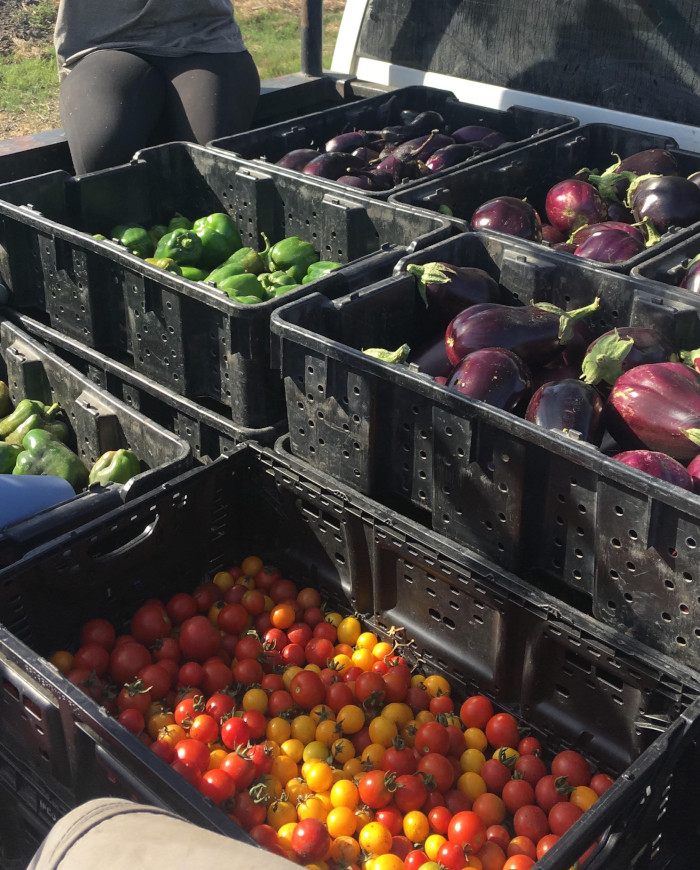Written by Sierra Raby
Fall 2018
As farms across the US continue industrializing and consolidating, populations of small farmers face drastic declines. Their farming knowledge, which tends to be much more sustainable and ecologically sound, disappears with them. This semester I worked with First Generation Farmers (FGF), an organization based on a small farm in Brentwood, California, which actively helps foster the next generation of farmers by recruiting new farmers and instructing them in organic and agroecological methods.
For my food systems community engagement project, I wanted to work with the production side of food systems (as compared to food access on the consumer end). As UC Berkeley is located in a Bay Area city, this necessitated a longer commute to my rural project site, given that I hoped to work with a farm that operates on a larger scale than the Bay Area’s urban farms and gardens. FGF’s harvests and market days begin with (or before) the sunrise at six am, so I made the two hour commute on the evenings previous to the work days. This aspect of the project was valuable in itself, as I became more familiar with the other farm workers and their tasks and lifestyle through these longer weekend stays.
I was surprised to learn that one of the farm’s most pressing problems is securing enough labor to successfully harvest and sell their crops. They previously relied mainly on migrant workers, but due to crackdowns on migrants over the past few years, many were too frightened to return to the farm. Almost all of the farm’s labor is now sourced through their Beginning Farmers program and World Wide Opportunities on Organic Farms (WWOOF), a service which facilitates the placement of volunteer workers on organic farms. Although the farm gains some financial relief through this unpaid labor source, WWOOF labor is often unreliable, as the farm cannot control when new volunteers will reach out to them. Over the summer months when more people are traveling, the farm sometimes has so many WWOOFers that some sleep in tents outside the WWOOF house, while in the winter they might only have two or three volunteers. Most WWOOFers are white and substantially better off financially than the migrant workers on farms elsewhere in the US. These volunteers see their farmstay as an exciting experience, which contrasts with the necessity of farmwork for migrant’s livelihoods.
As the farm’s produce sales do not provide enough income to sustain them, they have diversified to incorporate various value added products that help provide additional income. One of my first tasks for FGF was helping them work through the strict legal requirements for designing a commercial kitchen. Once the kitchen construction finishes, they can produce their own value added products like pies, pickled vegetables etc to sell at their farm stand for substantially higher prices than raw produce. The farm’s other value added products include u-pick produce, goat milk soap, succulent baskets, and goat yoga sessions. Additionally, the farm hosts educational agriculture workshops and after school classes. While these educational programs help provide farm income, they also serve FGF’s mission of sustaining a healthy and robust farm culture and population in the face of increasing consolidation of American farms.
FGF maintains a commitment to organic farming as a central component of their standards for sustainable agriculture, and all their beginning farmers learn to farm with this methodology. Organic agriculture has many agroecological and social benefits, including a healthier environment for workers, improved health of watersheds (especially riparian ecosystems in irrigation canals next to fields), and freedom from reliance on agrochemical corporations. FGF is USDA organic certified, and although this certification was expensive for the farm, certified organic produce does draw higher market prices, which helps to support their production. However, organic production is not necessarily perfectly sustainable. For example, as FGF does not spray herbicides, they instead lay down plastic tarps over entire rows of crops before planting. Crop seeds are planted in small holes in the tarps, allowing the crop plant to receive sunlight, while ubiquitous undesired weed seeds cannot grow. Although this method allows the farm to omit herbicide use and avoid massive labor inputs required for continuous weeding, it does still entail the consumption of large amounts of non-reusable plastic tarps every season.
I believe the most important part of my experience on the farm this semester was simply connecting the production of the food I eat with my consumer experience. This morning when I saw a produce box labeled “Brentwood Squash” in my kitchen, I pictured much more than the box’s idyllic image of a watercolor sun rising over neat lines of crops. FGF helped me de-romanticize the commodified image of pristine American (and global) farms by exposing me to many of the struggles of maintaining sustainable production within an industrialized food system.


